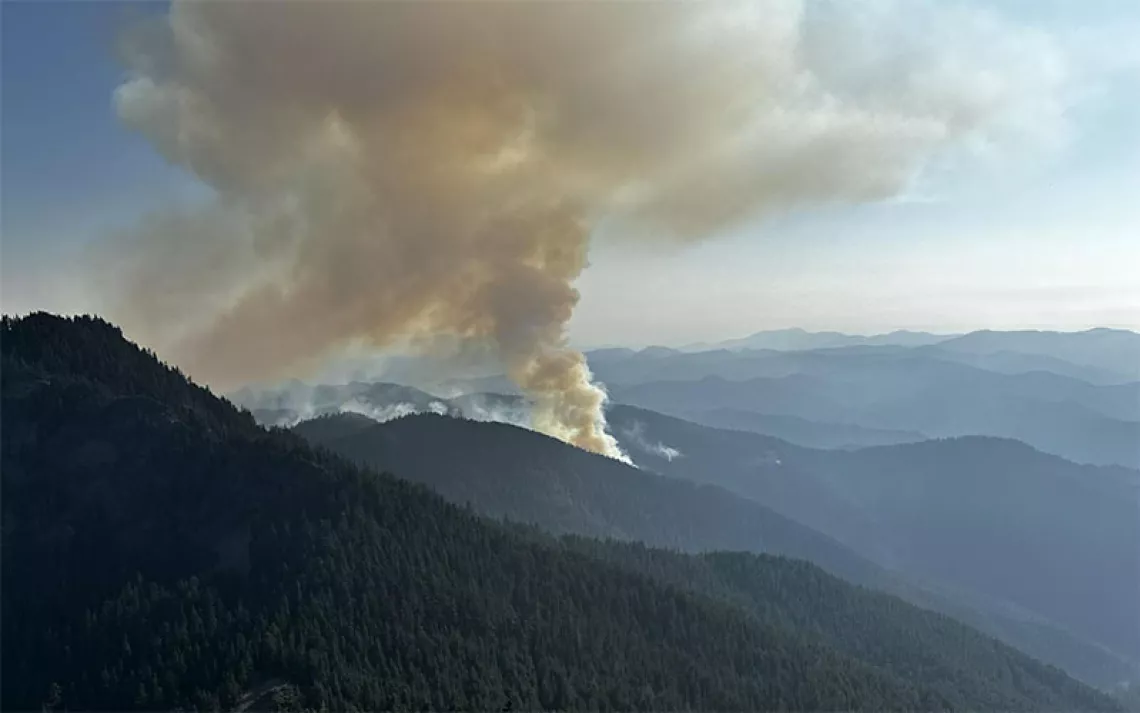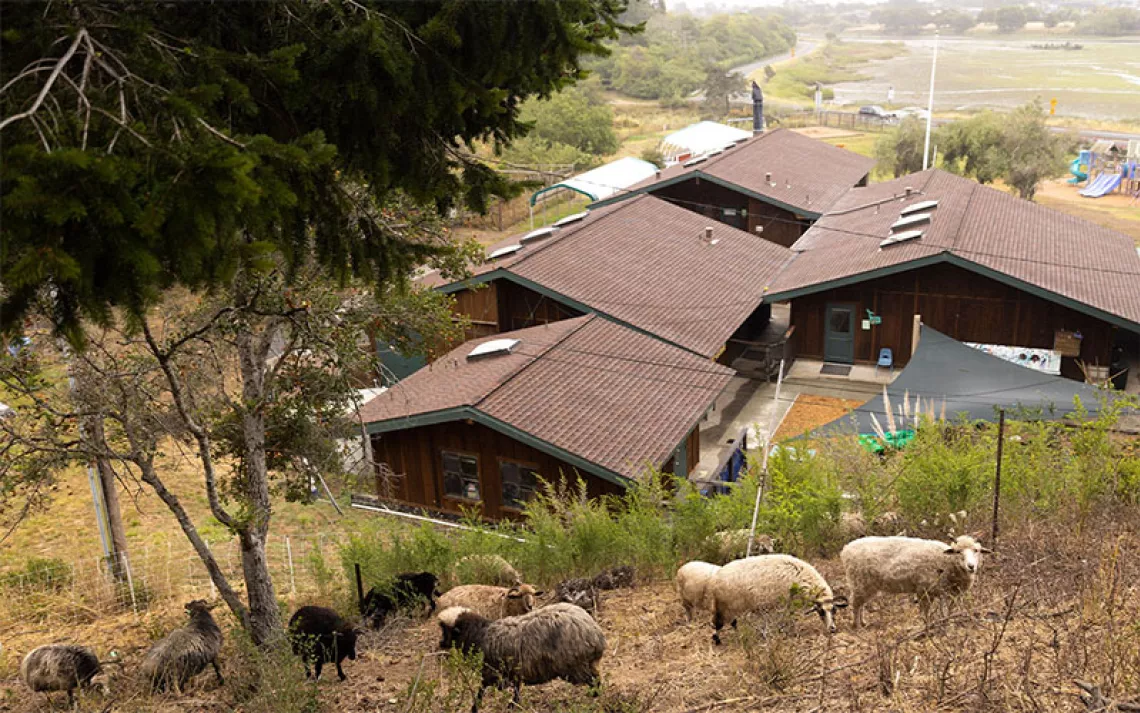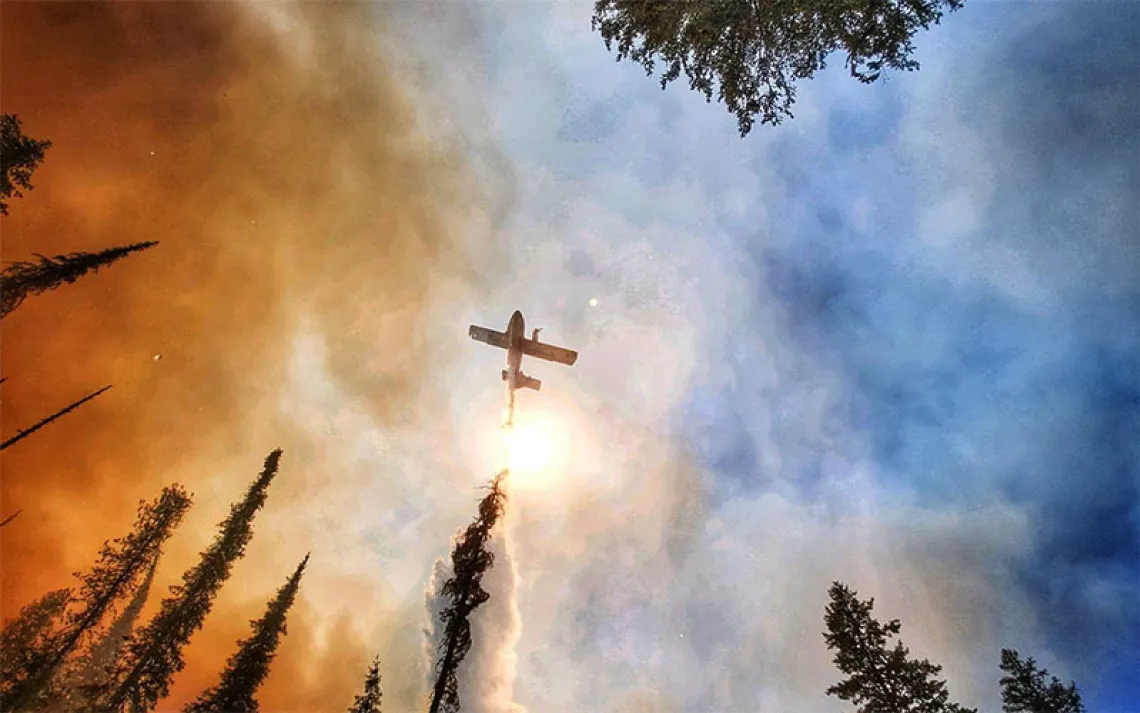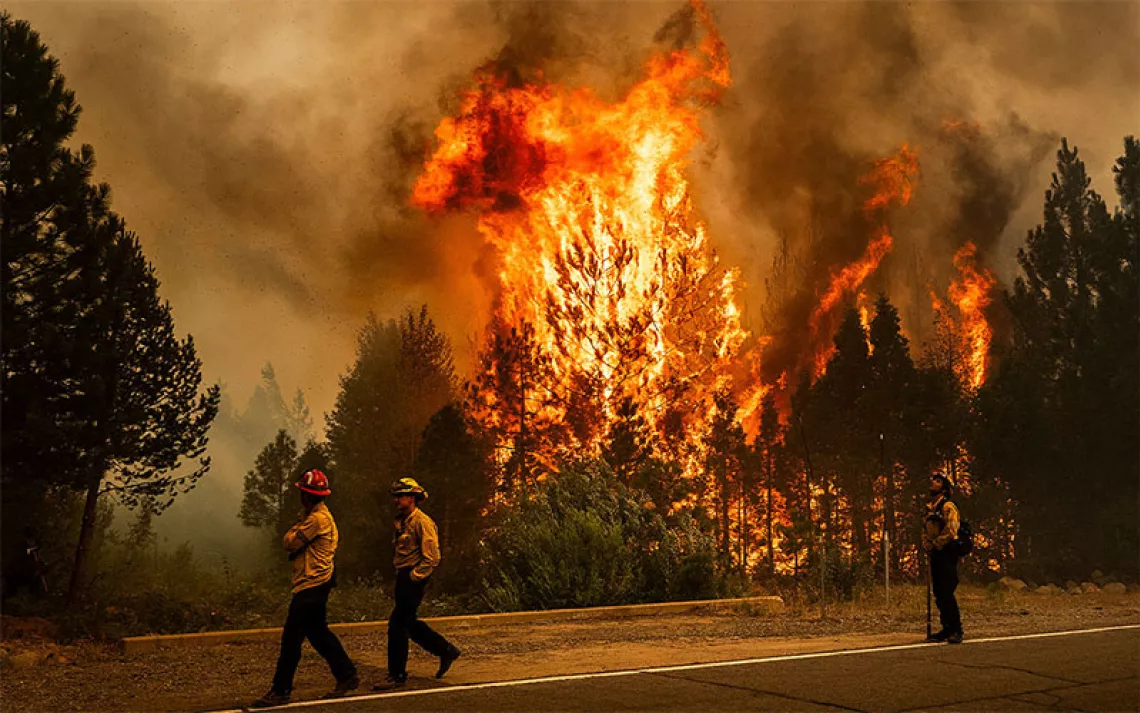Farmers Are Planting Green “Fuel Breaks” to Fight Wildfires
Agave and other plants can boost defensible space
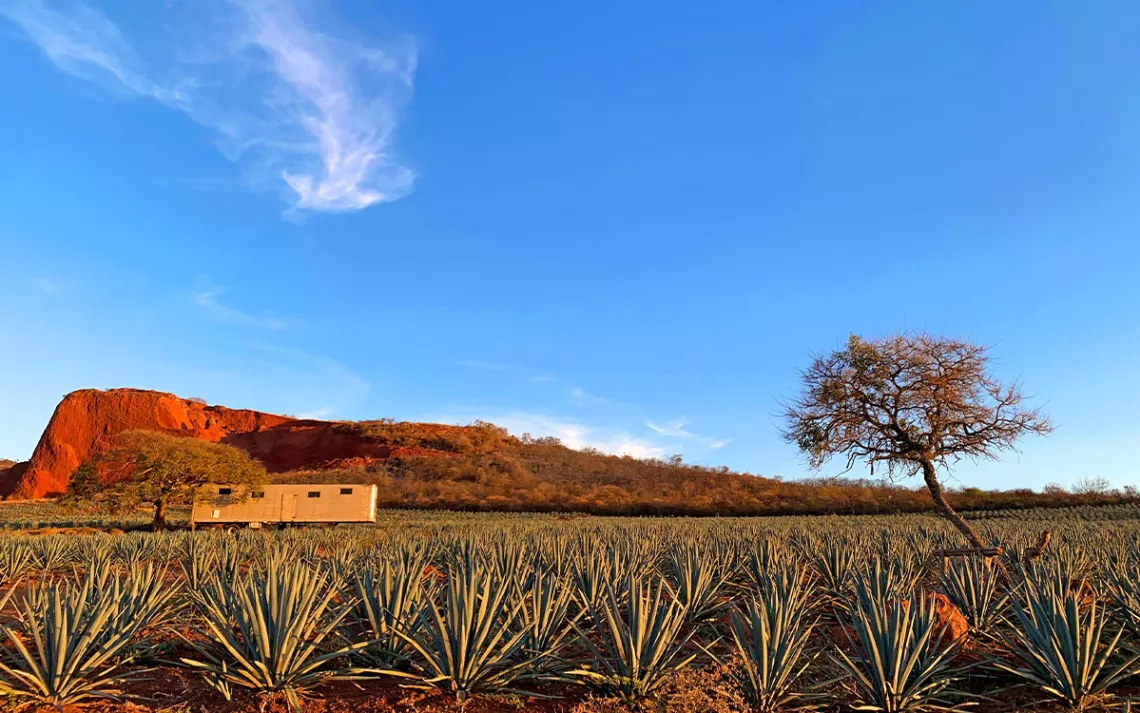
Photo by piginka/iStock
In 2018, not long after the California Thomas Fire, Berkeley “Augie” Johnson, his wife, and his daughter were in their Montecito home when a massive mudslide came crashing through. The Johnsons clung to their fireplace until the flow subsided and made it out to help save a neighbor’s two-year-old child who had been swept up in the debris. Their home was destroyed; however, the Johnsons were fortunate compared to much of their community. Two people died in the initial blaze—which at the time was the largest in modern California history—and another 21 perished in the subsequent mudflow, including four family members of the boy Johnson helped to pull from the muck.
“The fires burned so hot and so long that it fused and glazed all the soil and took out all the root structures that held it together,” says Johnson. “When the rains came, it caused the whole mountain to come down.”
Fearing it could happen again, Johnson began attending fire meetings and doing his own research. When he and Marvin Gutierrez, the VP of operations for his company Augie’s Tequila, learned that agave and other succulents have been known to help slow and even prevent the spread of wildfire in defensible spaces, they got an idea. What if they could plant agave around the community to protect against future wildfires? Thus, their spinoff brand Firebreak Tequila was born.
Though Johnson and Gutierrez are not farmers by trade, the pair join an increasing number of growers who aim to use agricultural practices to protect their communities from the accelerating threat of catastrophic wildfires. Numerous studieshave shown that effective agroforestry techniques can act as productive fuel breaks for areas surrounded by fire-prone vegetation. While the Thomas Fire did burn 1,000 acres of avocados, those irrigated groves acted as fuel breaks similar to the Napa vineyards that helped to curb the spread of the devastating fires in 2017 and 2020.
These studies and anecdotes prompted Johnson and Gutierrez to sow their own agricultural green belts. In the past few years, they’ve planted around 2,000 agaves and 200 prickly pears in surrounding Santa Barbara County communities. “Orchards act as fuel breaks, but I wanted plants that could be dry-farmed,” says Johnson. “Avocados use six times more water than agaves and more like 10 times the water of prickly pears.”
Agricultural fuel breaks suited to local landscapes are increasingly taking root across the globe.
In Madagascar, the Regional Eastern Africa Fire Management Research Center has started giving farmers 25- to 100-meter-wide plots of land to cultivate (far larger than the classic five- to 10-meter breaks) so growers can generate income while limiting the build-up of biomass.
In Extremadura, Spain, there has been a growing chorus to restore and maintain the region’s traditional dehesa landscape, an agro-silvo-pastoral system that has proven to be the most flame-resistant in the fire-prone region. Dehesa combines livestock husbandry and crop cultivation while managing local oak trees in a way that maximizes biodiversity and environmental health in the dry Mediterranean climate; an arid environment is remarkably similar to many regions of the west coast.
Tim Van Wagner of First Rain Farm in California’s Sierra foothills near Nevada City has adapted his business model in a way that somewhat mimics dehesa techniques. In the aftermath of 2018’s devastating Camp Fire—the most destructive in California history—that took out the entire town of nearby Paradise, Van Wagner transformed the goat dairy portion of his farm into a vegetation management service. In addition to selling vegetables, berries, and seeds, Van Wagner now offers subscription grazing service to his neighbors and local governmental agencies. “When the Camp Fire happened, it was amazing to think how that could have been us,” says Van Wagner. “I felt like there had to be something I could do that also feels good for the land.”
His 170 Nubian-Kiko crosses regularly browse the understory of the surrounding ponderosa pine and oak forests for brush including highly invasive Scotch broom and Himalyan blackberry. Those highly flammable berry vines had taken over many areas of the surrounding forest, scaling trees to create what’s known as “ladder fuels” that carry fire up into the canopy where it can race across entire woodlands within hours. Already, many of those dense, impassable thickets are gone where Van Wagner’s herd has regularly grazed.
Though the goats have made a big difference in thinning the herbaceous undergrowth, Van Wagner notes that the voracious browsers are just one tool in his fire prevention box. The goal is to properly manage the surrounding forest and landscape after what’s added up to decades of neglect. Following the wisdom of Indigenous tribes, he also uses prescribed burns to clear the accumulation of dead sticks, pine needles, and oak leaves that the animals leave behind. “We need to be looking for comprehensive land health and how it relates to climate, hydrological systems, and diversity of plants and animals,” he says. “There’s way more benefit to this kind of fire resiliency than people are aware of.”
Across the West, farmers and ranchers have been incorporating similar land-management practices suited to their individual ecosystems and risks. Cheetah Tchudi of Turkey Tail Farms in Butte County, California, also uses animals, pigs, and sheep, along with some mechanical thinning to create aggressive fire breaks around his community. Though removing dead and overgrown vegetation is an integral component, in many cases growers add vegetation with higher water content to the landscape. Like Johnson and Gutierrez’s agave, these moisture-rich agricultural green belts can help to slow the progress of a blaze. Some dryland wheat farmers in the rain shadow of the Cascade Mountains have begun surrounding their highly flammable fields with 100-to-200-feet borders of moisture-rich sunflower and canola.
In the nearby Great Basin that stretches from eastern Oregon across Nevada and into Utah, ranchers are increasingly seeding less flammable forage kochia in their pastures to outcompete highly flammable, invasive cheatgrass. Cheatgrass, which has overtaken rangelands across the West, not only creates a dense sea of dry material for fires to sail across, but it’s also unpalatable and potentially harmful to grazing animals throughout much of the season. Forage kochia boasts 10 times the moisture content of cheatgrass when fires are most likely to occur. It’s also highly nutritious for livestock and helps with other issues like soil erosion control. “If you can get it established, it’s great for green strips,” says Jacob Powell with Oregon State University’s agricultural extension faculty in Sherman and Wasco Counties, who has been increasingly focused on helping ranchers reduce the risk of wildfires in the area since a series of three different fire events swept through with extreme winds in 2018.
Though agave and prickly pear have not been adopted to the same level as USDA-approved forage kochia, it is already proving to be an effective fuel break—even though, Johnson says, his model seems unlikely to be profitable for now.
In 2021, as the Alisal Fire began reaching toward Circle B Bar Ranch in Goleta, it hit the half-acre wall of water-dense agave that Johnson and Gutierrez had planted and came to a halt. Though many of the plants died as a result and the surrounding blaze did take out a couple of buildings on the iconic property, the majority of the ranch was spared with the help of that water-dense agricultural green belt. “I was super excited,” says Johnson. “It reenergized me to figure out how to spread the word that, 'Hey, this works.'”
 The Magazine of The Sierra Club
The Magazine of The Sierra Club
